Liverpool’s quest to clinch a long-awaited league title comes following the “least” competitive Premier League campaign since the competition’s inception in 1992.
Football, and sport in general, attracts the masses through its unpredictability and drama, where the level of uncertainty and competitiveness keeps fans invested.
The top division of English football is widely branded as the ‘best league in the world’, mostly within the confines of the country, but the inequality within it is spiralling to a level which leaves only a handful of clubs competing at the top while others simply fight for survival, or to be the best of the rest.
Although game by game the Premier League can throw up an upset result, which Liverpool are very much aware of in seasons gone by, more often than not the final standings are all but a foregone conclusion as money and superior resources talk in the modern era.
The English top flight is the highest revenue generating league in European football, in large thanks to billion-pound television deals which has even seen the bottom three clubs earn more than the Bundesliga champions in broadcast revenue.
Commercialisation of the league has shifted the focus for a plethora of clubs, and this continuing and ever-growing financial polarisation transcends onto the field of play and onto the final league standings, where season 2017/18 was the least competitive in the Premier League era.
The Least Competitive Premier League Season in History

The formation of the EPL as a breakaway from the First Division was one which forever altered English football as utility maximising turned to profit maximising as the division capitalised on global demand.
This process kick-started the widening inequality among the 20 clubs as a steady decline in competitiveness peaked following the exploits of Pep Guardiola’s Man City last season after they rampaged their way to the title after collecting 100 points.
Their historic title-winning season combined with the remainder of the top four saw their total points tally (333) supersede that of all the bottom eight teams put together (293).
It was a season which fans have long known was on the horizon after witnessing just six different champions in 26 seasons.
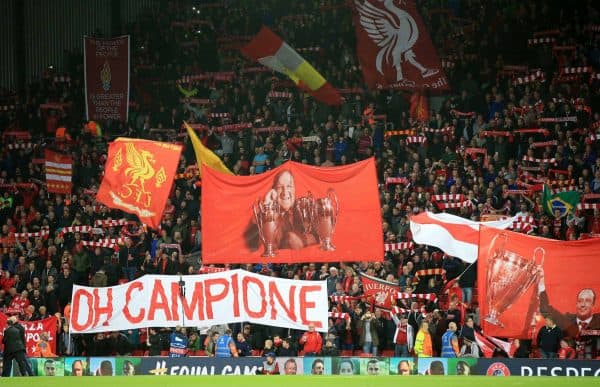
The findings of the EPL’s new low emerged after using the C5 index of competitive balance to analyse the final standings for each season to date.
The calculation first sees the total points won by the top five clubs in a particular season divided by the total points won by all clubs to provide a C5 ratio. The final index was then calculated using the formula (C5 ratio/(5/N)) x 100, where N is the number of teams competing.
A perfectly competitive league will take a value of 100, thus as the index rises the competitive balance decreases.
The graph below displays a glaring and alarming divide which dismisses any suggestion that the EPL should be renowned for its competitiveness as the results indicate a trend of declining competitive balance over the course of 26 seasons.
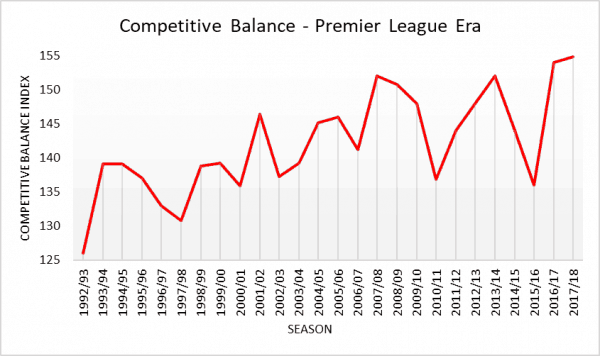
The league’s debut campaign had a record level of competitiveness with 126 – although there were 22 teams at the time – whereas 2017/18 logged a record high index of 154.85.
There a number of reasons you could point to for the current state of affairs whether that be an influx of foreign ownership, broadcast revenue, access to lucrative European competitions or commercialisation as a whole.
Each have certainly played a role in creating the gulf from the ‘usual suspects’ to the rest of the league such is their pulling power to acquire the best talent having accumulated the resources and funds to do so.
The likes of Man City, Man United, Tottenham, Liverpool, Chelsea and Arsenal have been at the top of the totem pole for years on end having flexed their dominance on and off the field.
The numbers say it all as 14 out of the last 16 seasons the above-mentioned clubs have each taken up a spot in the top six or in various combinations within the top four.
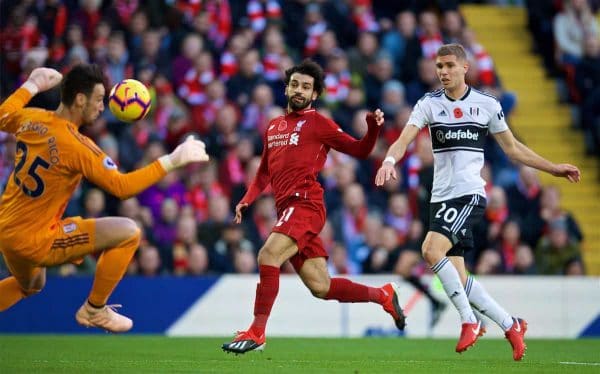
It means the element of surprise as to who will clinch a spot high enough for a place in European football is no more, it is simply the final order they shuffle themselves into which is left to decide while the remaining 14 clubs participate in their own league further down the table.
Nothing exemplifies this than the current season record of the bottom five vs the top five.
Huddersfield, Fulham, Southampton, Cardiff and Burnley have faced Liverpool, Man City, Tottenham, Chelsea, Arsenal a combined 30 times so far this season and the record is grim for the league’s cellar dwellers: W1 D1 L28 GF16 GA 90.
It is a continuation of last season, and although 21 games are not an adequate sample size to calculate the competitive balance, the numbers suggest 2018/19 is on course to surpass the lows of last term with a current index of 161.22.
What It Means for Liverpool…
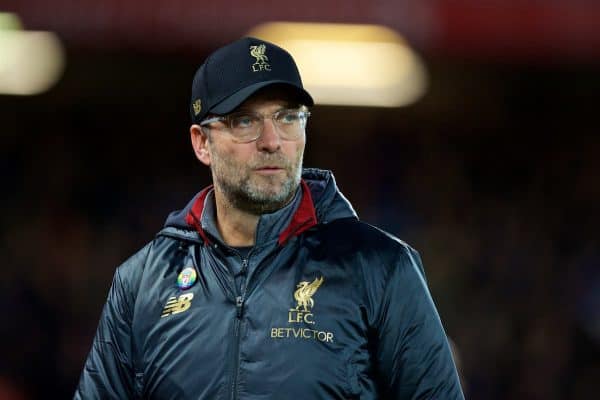
For Liverpool, these findings compound what we already know, that the margin for error towards the top of the table this season is slender to say the least.
The current climate within the league ensures every game is as crucial as the next as the Reds bid to extend their lead over Man City, where dropping points against the unfavoured teams will only make that task tougher.
So far this season Liverpool have dealt with those sides with a newfound stability and defensive pragmatism, where the only dropped points of the campaign have come against sides currently in the top five.
But, the Reds of the previous two seasons under Jurgen Klopp have not fared well against those fighting to maintain their Premier League status.
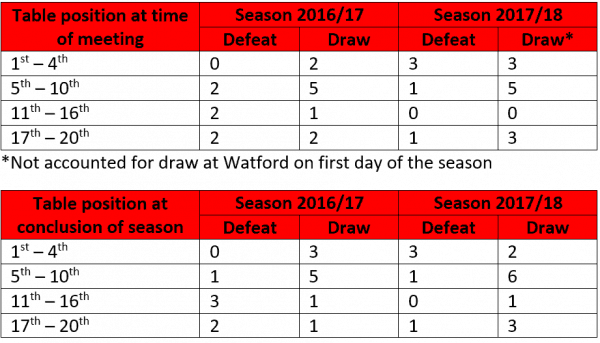
In season 2016/17 Liverpool dropped 18 points against teams positioned 11th-20th at the time of meeting, which subsequently moved to 19 points when taking the respective result and comparing it with the club’s final standing in the table.
Last term saw a slight improvement, but in a more worrying trend those in the relegation zone, or one position above, continued to be the thorn in Liverpool’s side – as a total of nine points were dropped against those teams – while the Reds also dropped a significant number of points against direct rivals.
Relinquishing points against sides who many would expect Liverpool to overcome proved the difference in finishing fourth as opposed to second, but the Reds appear to have turned over a new leaf this season as ten games against those currently positioned in 11th-20th have returned maximum points.
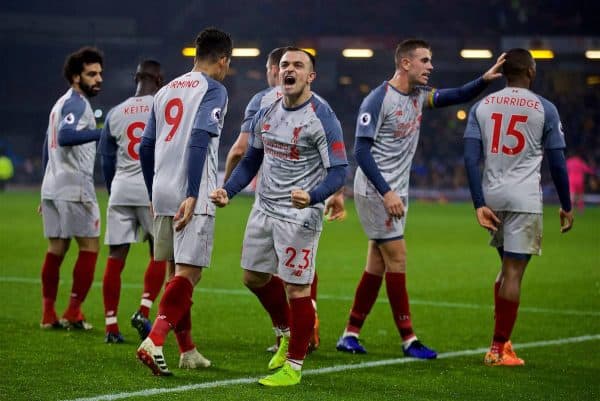
Liverpool’s challenge now is to maintain their current record against the unfavoured teams while also improving their return against their closest rivals –and it is so far so good for Klopp’s men.
The improvement at this stage of the season from this year to last is stark, 12 months ago the Reds sat in fourth-place with 41 points, 18 points behind leaders Man City, whereas now Liverpool have established a four-point gap atop of the table, with just one defeat to their name.
Furthermore, the Reds’ 49 goals in 20 games is one more than at this stage of last season, but significantly it is the defensive record which has turned Liverpool’s fortunes around having conceded just ten in comparison to 24.

In a league where the overall level of competitiveness is diminishing season by season, it has never been more important for the Reds to assert their dominance over their closest rivals.
Despite the defeat to City on Thursday, Liverpool’s record of two victories, three draws and a singular loss is more than acceptable with only two more meetings with members of the top five on the horizon, against Tottenham and Chelsea on home soil towards the end of the season.
It has the Reds in a strong position as regardless of the first defeat of the season, Liverpool will carry a four-point advantage into the remaining fixtures throughout January.
But such is the dominance of clubs at the top of the table, it is not beyond the realm of possibility that two teams amass over 100 points come the end of May and as such Liverpool cannot afford to waste time worrying about results they cannot control.
All that is left to do is to stay the course, enjoy the journey and continue piling the pressure at City’s doorstep. Who knows where it might lead.
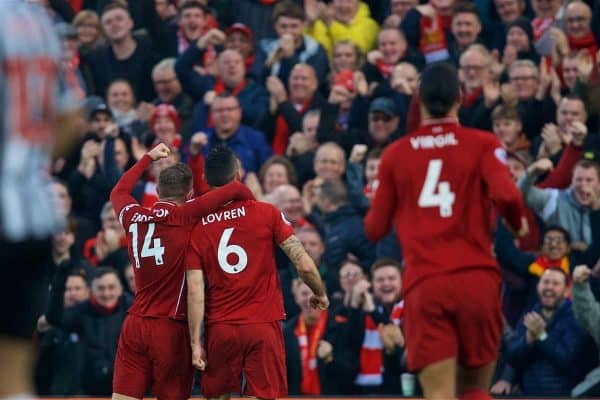





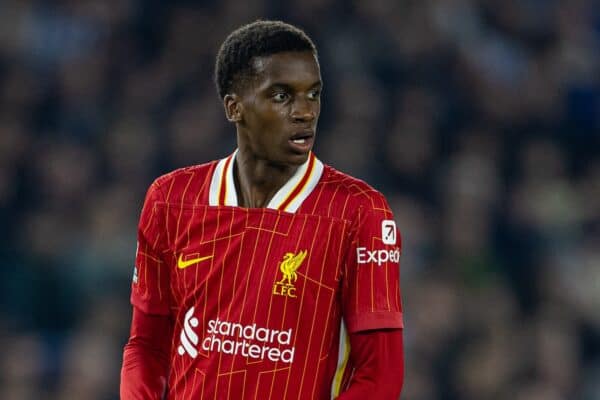




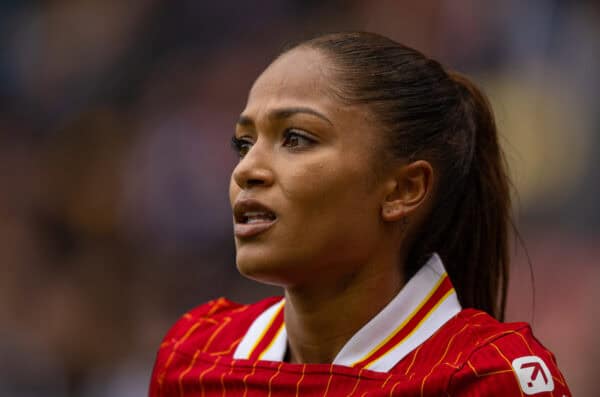
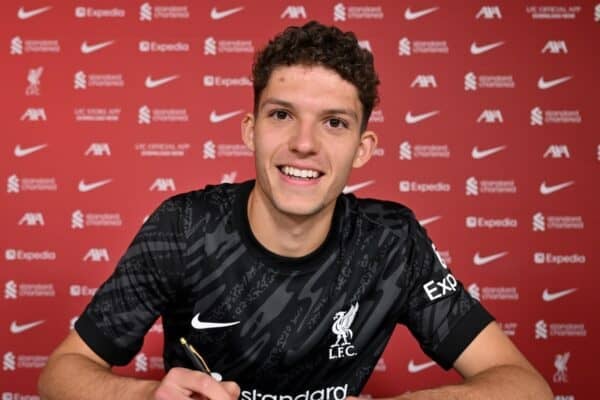




Fan Comments